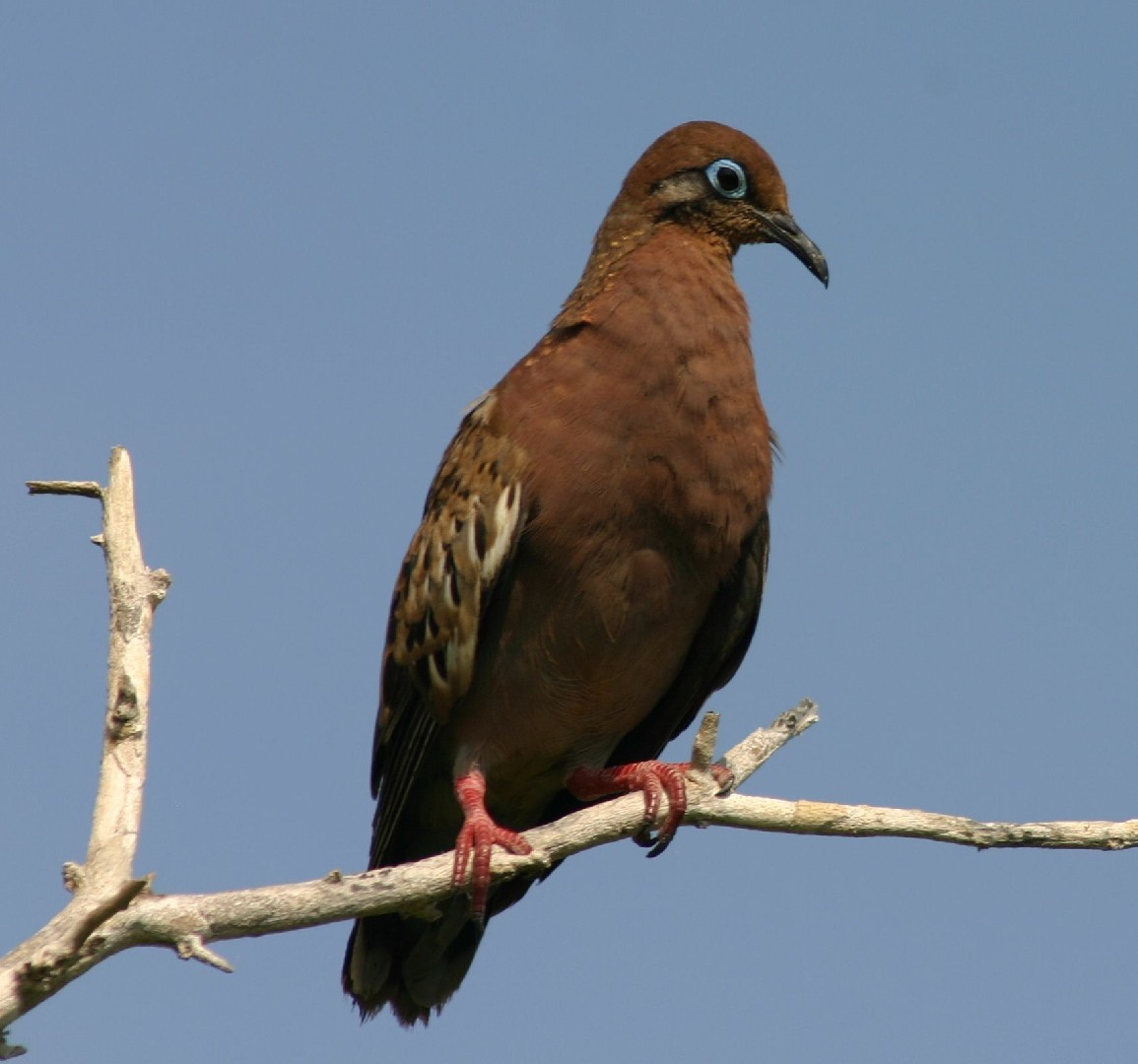Galapagos Dove
A species of Zenaida Doves Scientific name : Zenaida galapagoensis Genus : Zenaida Doves
Galapagos Dove, A species of Zenaida Doves
Botanical name: Zenaida galapagoensis
Genus: Zenaida Doves
Content
Description General Info
 Photo By Charles J. Sharp , used under CC-BY-SA-3.0 /Cropped and compressed from original
Photo By Charles J. Sharp , used under CC-BY-SA-3.0 /Cropped and compressed from original Description
The Galápagos dove (Zenaida galapagoensis) is a species of bird in the family Columbidae. It is endemic to the Galápagos, off Ecuador. It is fairly common and is found in a wide range of open and semi-open habitats, especially in the arid lowlands of the archipelago. The Galápagos dove grows to between 18 and 23 centimeters long. A boldly marked bird, the Galápagos dove has dark reddish-brown upperparts, a pinkish neck and breast, a buff-coloured belly, and brown wings, streaked with white and black. The long downward curved beaks on the Galápagos dove helps it feed mostly on seeds and fruits from the ground. Very reluctant to fly, it will only do so as a last resort. Galápagos doves spend most of their time on the ground searching for food, mainly feeding off seeds, caterpillars, and Opuntia cactus flowers and pulp. They inhabit rocky lowlands, scattered trees, bushes, and cacti. In the mid to late 1600s, Galápagos doves began to be hunted by sailors. Extensive human depredations continued at least into the 1960s, but the doves are now most threatened by feral cats. Other threats are diseases, pollution, and habitat degradation. When their nests are in danger, the doves will pretend to be hurt or injured and lure the predator away from its nest. Most Galápagos dove nest are built on the ground, often under lava overhangs, or in old mockingbird nests in the cacti. A typical clutch consists of two eggs. Breeding begins three to five weeks after the beginning of the wet season, with up to three clutches a year. On islands where bees are absent, the Opuntia cacti have evolved softer spines. This may allow birds, including the dove, better access to the flowers, with bird activity serving to pollinate the flowers. 
Size
23 cm
Nest Placement
Ground
Feeding Habits
Galapagos Dove mainly consumes seeds, particularly of Croton scouleri, and seasonal caterpillars. Utilizing its long, curved bill, galapagos Dove digs for seeds like Merremia aegyptica. On Santa Cruz, it eats various native and non-native seeds, and on some islands, it feeds on Opuntia flowers and pulp, as well as fly larvae.
Habitat
The galapagos Dove inhabits primarily arid and semi-arid environments characterized by dry, rocky terrain. These birds are typically found in lowland areas peppered with an assortment of trees and bushes, with a notable presence of Opuntia cacti that are integral to the landscape of their natural habitats.
Dite type
Granivorous
General Info
Feeding Habits
Bird food type
Species Status
Not globally threatened.
Scientific Classification
Phylum
Chordates Class
Birds Order
Pigeons and doves Family
Dove Genus
Zenaida Doves Species
Galapagos Dove